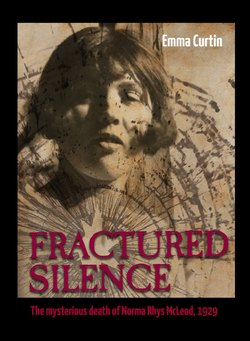Читать книгу Fractured Silence - Emma Curtin - Страница 4
На сайте Литреса книга снята с продажи.
Chapter One Setting the scene: a tragic day’s events
ОглавлениеThe unusual circumstances of Norma’s death prompted hundreds of newspaper accounts, published over a three-month period, in the local, state and national press. These gave me my first glimpse into interpreted accounts of Norma’s last day.
I read all of them with increasing interest, most on the appropriately named Trove, the National Library of Australia website; others through the State Library of Victoria microfilm archives. Many of the accounts were repeated through national syndication. Some were brief, others were more elaborate. Accounts ranged from the traditional factual summaries of the conservative Argus, through to the more tabloid-style, salacious Truth.
There were frequent discrepancies in the press accounts of Norma’s death. Gaps left vacant by a lack of police information needed to be filled with a flourish of creativity and a heightened sense of drama to attract the readership away from competitors. These served to remind me that the press didn’t always get it right – the adage ‘never let the truth get in the way of a good story’ echoed in my head as I continued reading the accounts.
Some of the inconsistencies related to simple descriptions, such as one newspaper report that Norma died in an ‘upstairs bedroom’, when the McLeods’ home was only single storey. Others related to dates. Most of the information I read provided Norma’s birth date as 31 July 1901 - even her mother had apparently stated as much during the inquest, although this could have been a transcription error. She was, as clearly stated on her birth certificate, born in 1900. A minor detail I know, but an annoying one for a pedantic researcher like myself. Just another prompt to read everything with caution and a degree of scepticism.
At least two newspapers referred to Norma as Mona McLeod. This was perhaps an easy mistake – Mona McLeod was a well-known golfing celebrity who’d won the Australian Championship in 1921, 1926 and 1927, and been runner up in 1925 and 1928 – the association with Norma’s intention to play golf on the day she died and the similarity in their names could explain the confusion, but a degree of accuracy in such a serious case should have been assured. The championship golfer must have been horrified to see the headline “Death of Miss Mona McLeod” splashed across the morning edition of the 8 October 1929 Age, not to mention the distress to Norma’s family.
Other inconsistencies were more controversial, relating to the timing of events. This would prove more critical as investigations progressed, but I’ll get to that later.
I spent hours transcribing the newspaper accounts into one document, looking for clues – not just to the case, but to where information was coming from, what details police were ‘feeding’ the press, and how language was used to reflect new theories. Reading between the lines, there was a real sense that journalists expected the police to tell them everything.
Australia’s press had long considered itself the monitor of police accountability and a partner to the force - a partnership pressmen believed should not be ignored. An article in Melbourne’s Punch in 1911, for example, stated: “It is to the Press and publicity that is due the solution of innumerable crimes, and the capture of innumerable criminals … in all the unfathomed mysteries of the last fifty years the cause of the failure of the police can be traced directly to their stupid unwillingness to take full use of the Press, and so obtain the fullest degree of publicity”.
In Norma’s case, the press couldn’t help solve the mystery, but was this, as implicit in the quote above, because the police held information back? It was certainly possible. Police historian Robert Haldane stated that Chief Commissioner Blamey (who was head of the force at the time of Norma’s death) “took steps to thwart what many other people accepted as the legitimate activities of newspapermen. He stopped policemen giving information to journalists, he delayed and vetted crime reports that were released to the press”. In some respects he pre-empted regulations that would be enforced years later in terms of appropriate press boundaries, but in the 1920s, it was argued, he “went beyond reasonable control”. Newspapermen wanted in on the action.
